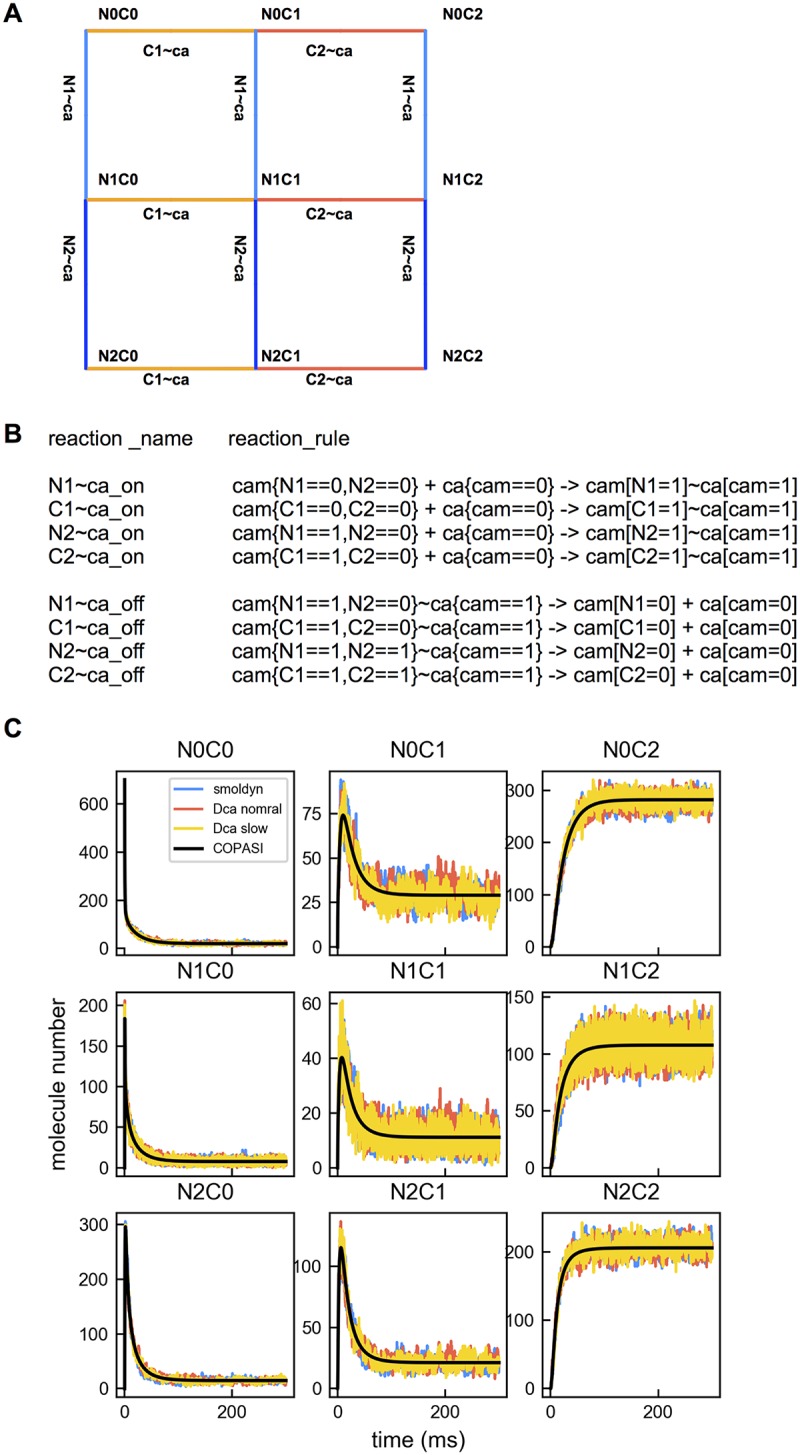Fig 2. Ca2+-CaM interaction network.

(A) Ca2+ and CaM interactions can produce 9 different states of CaM. CaM has two lobes, an N lobe and a C lobe, each of which has 2 Ca2+ binding sites. Binding sites on the lobes are designated N1, N2, C1 and C2. The N lobe and C lobe bind Ca2+ independently of each other, but Ca2+ binding within a lobe is cooperative. Thus, site N2 cannot bind Ca2+ unless N1 has already bound Ca2+ and a similar rule applies to sites C2 and C1. In the figure N0C0 represents apoCaM (no Ca2+ bound), “N2” represents binding sites N1 and N2 both bound with Ca2+ and “C2” represents similarly that both C1 and C2 have Ca2+ bound, “N1” and “C1” represent only the “N1” site and only the “C1” site have Ca2+ bound. Edges are labeled to indicate bidirectional interactions, including both bindings and unbindings. For example, “N1∼ca” means interactions between a Ca2+ ion and a CaM at the N1 site. Likewise, “C1∼ca” means interactions between a Ca2+ ion and a CaM at the C1 site. (B) The same reactions between Ca2+ and CaM as shown in A are represented using the syntax of the modified simulator. The binding and unbinding rate constants are labeled on the left. “+” represents a binding reaction; “∼” represents molecules that are bound. “{}” on the left-hand side of the reaction specifies the states of the reactant binding sites or the conditions for a reaction to occur. On the right-hand side, binding sites involved in the reaction are assigned new values. Notice the “==” sign is used on the left-hand side, but the “=” sign is used on the right-hand side. The “==” represents True (==1) or False (==0), whereas the “=” denotes an assigning operation. (C) The time course of each CaM state simulated using the original Smoldyn (blue), modified Smoldyn at default Ca2+ diffusion (red), half Ca2+ diffusion (yellow line) and COPASI (black lines).
